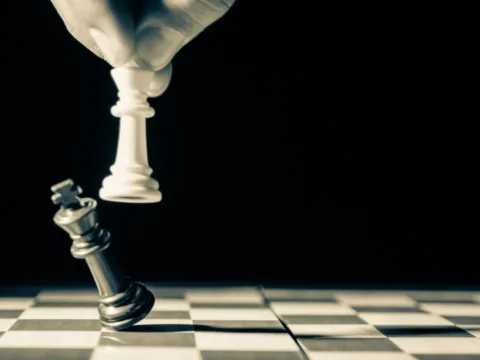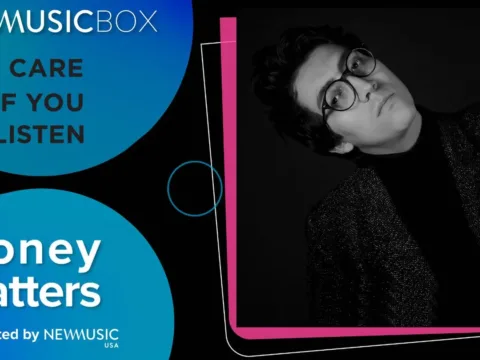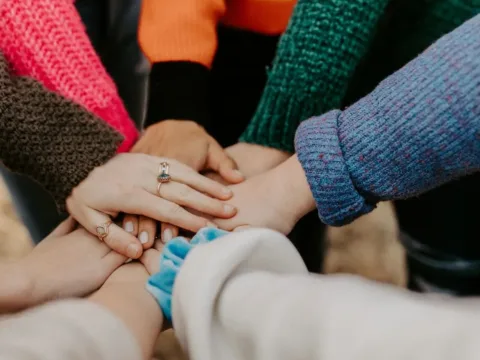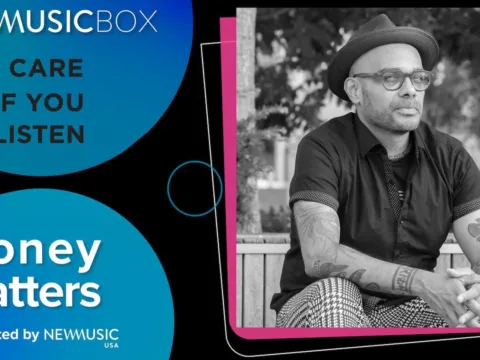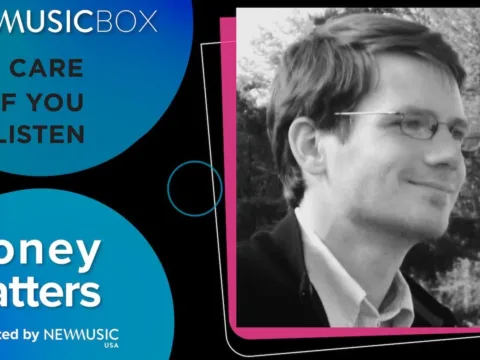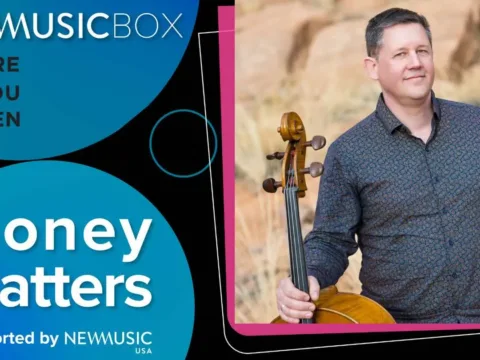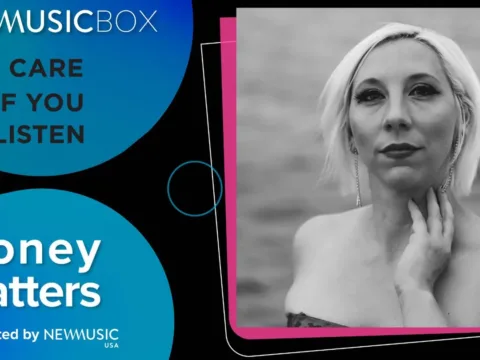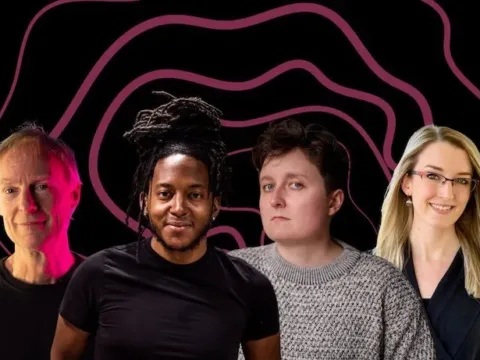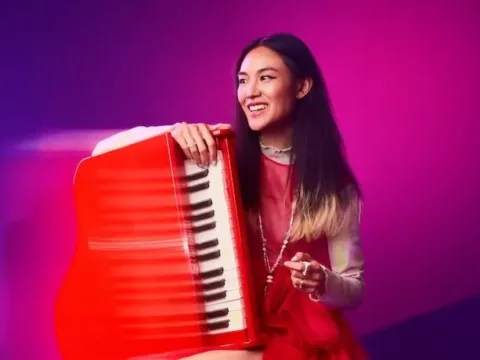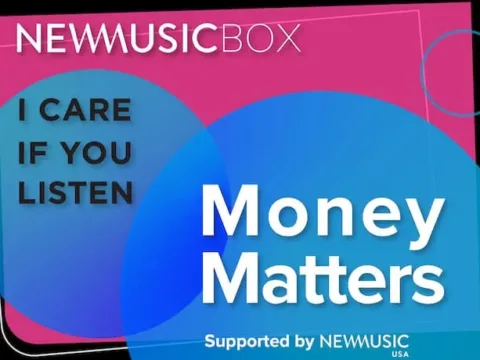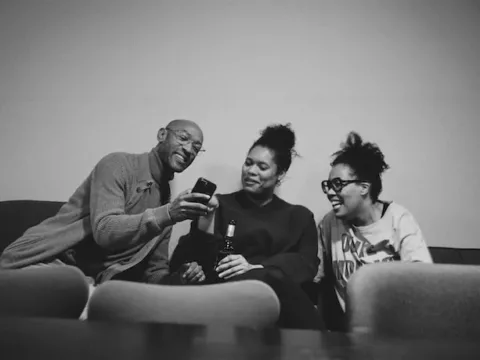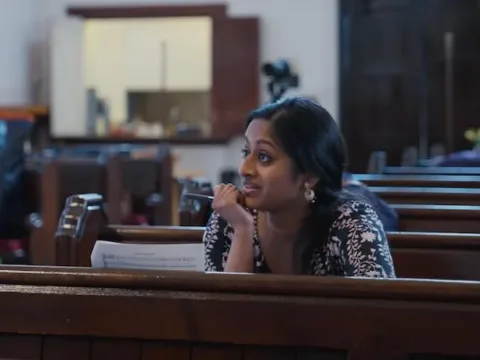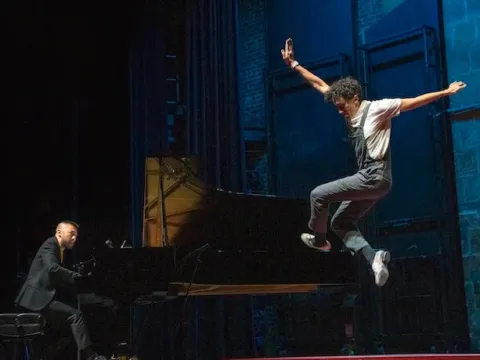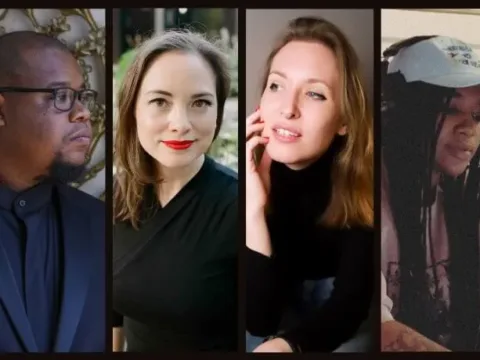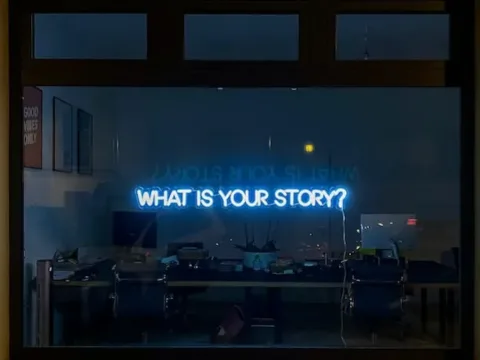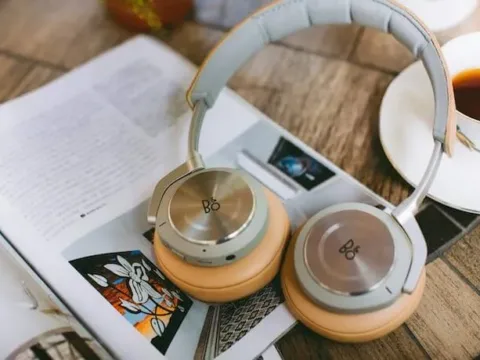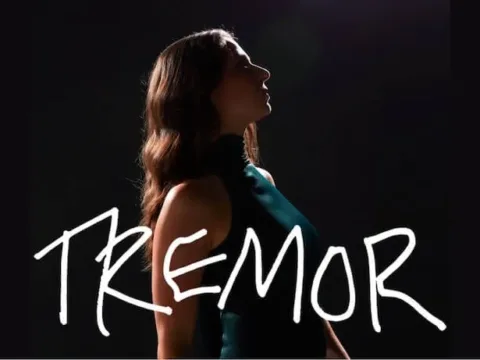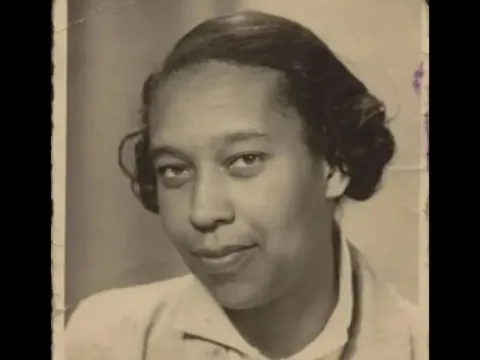“Casting Light” is a 10-part series that explores the often invisible inequities in contemporary arts spaces. Commissioned by ACF and I CARE IF YOU LISTEN, the goal of the series is to highlight the conversations that we need to be having more openly and transparently in order to build diverse, inclusive, and equitable artistic communities. Building on our commitment to anti-racism, a culminating collection of these articles and other resources will be shared for continued learning and dialogue.
“Music is the universal language of mankind.”
You’ve probably heard this quote (attributed to Henry Wadsworth Longfellow) somewhere before. Its meaning is straightforward enough; no matter who you are, where you come from, or what words you are able to speak and write, music is a form of communication you can understand. But for such a communal experience, the world of live music performance frequently excludes a massive group of people who have just as deep a need and a right to engage with it as everyone else — the disabled community.
Early on in my time as a neurodivergent, invisibly disabled music student at college, I began to recognize systemic inaccessibility in the school’s structures and routines. Mobility aid users touring the school had to take a longer, separate “accessible” route that included the only two elevators on campus. There were no wheelchair accessible restrooms or low height sinks on the first floor of the main building. Across disciplines, it felt like there was an active resistance to content warnings and sensory friendly experiences in performance and gallery spaces, some folks citing the idea that to make these accommodations compulsory would be censorship. When I came to the administration with inquiries about making the needed updates, I was told, “We don’t have the money” and “not enough people need it.”
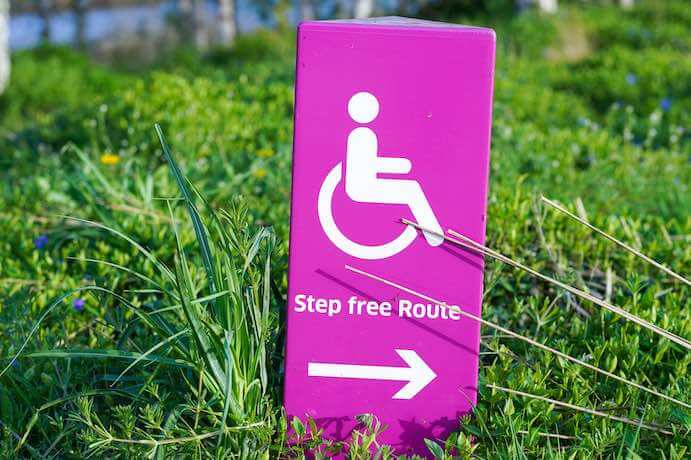
The unfortunate reality for disabled people is that these arguments are often the end of the conversation. In capitalist culture, accessibility is considered excessive or an inconvenience; if only 1 in 100 customers need something, it’s more “cost-effective” to abandon the customer. This mentality not only creates huge inequities for disabled people, but also boxes the world at large into unadaptable, unsustainable structures. And the assumption that “not enough people need it” is also simply not true; in 2016, statistics showed that as many as 1 in 4 adults in the U.S. have some kind of disability.
Accessibility is not a set of limitations, but a series of open doors. Accessibility benefits everyone! As we’ve seen with the mass-disabling event known as the COVID-19 pandemic, anyone, at any point, could become disabled. And making artistic spaces inaccessible — spaces where we experience essential parts of being human and connecting to our universal culture — dehumanizes the disabled community. So why wouldn’t we want to make music accessible to everyone? Why are we settling for being just barely ADA-compliant when we could be ADA-excited?
[Tweet “Why wouldn’t we want to make music accessible to everyone? Why are we settling for being just barely ADA-compliant when we could be ADA-excited?”]
The first step is to reframe the way we think about disability. Rather than viewing disabled people as a minority or “other,” consider how being inclusive could maximize your potential audience. After all, many contemporary classrooms include left-handed desk options for their students, even though only 1 in every 10 may need it. Accessible practices can also benefit able-bodied people who have limitations for different reasons. Low-height sinks are easier for wheelchair users, people with dwarfism, and small children to use. Providing closed captioning is useful for the D/deaf community, people speaking English as a second language, and those who struggle with auditory learning.
Once we’ve made this mental shift, we can expand our perception of what disabled creatives and performers can be. A disabled composer’s ability to write is not inherently hampered by their disability. Performers with disabilities are not limited to roles that specify a disability for their part or character. When seeking collaborators, the language that we use to convey that our artistic spaces will be accessible matters — there is a difference between “we do not discriminate based on ability” and “we are seeking artists of all abilities.” The distinction between compliant and excited can be as simple as making the time to say, “Let us know how we can accommodate you and we’ll make it happen.”
Next, we can take another look at the work we’re making. Though it can be difficult at first to anticipate the needs of those with limitations that we don’t personally experience, try to assess what abilities are required to realize your work in its current form, and if there are alternatives available to those without some of those abilities. If a performer has mobility limitations, have you written out possible substitutions for the choreography or physical demands of your piece? Do there have to be components like strobe lights, loud or sudden sounds, smoke, intense smells, or textured and constricting costumes that could make your performance painful for performers and audience members with sensory processing issues? You may be surprised to find that your work is not automatically lesser without these elements (and that far more people can enjoy it safely when you remove them).
When we begin to think about accessibility as the default instead of a cumbersome to-do, we actually unlock unique and innovative ideas that welcome every performer and audience member.
Take it a step further — what if we designed our creative work and performance spaces around the potential needs of disabled people? What if graphic scores were built with color blindness in mind or utilized Braille? What if instead of expecting audiences or performers to stand or move for extended periods of time, we specified seating options that could be directly incorporated into the execution and theme of a piece? When we begin to think about accessibility as the default instead of a cumbersome to-do, we actually unlock unique and innovative ideas that welcome every performer and audience member.
So you’re getting ready to mount your work. When we hold auditions and select our collaborators, accessibility can be the difference between someone choosing whether or not to even throw their hat in the ring. In order for disabled artists (and consequently, disabled people as a whole) to become visible, there have to be enough viable opportunities for them to showcase their talents. The first thing to do is choose a physically accessible audition space and be prepared to offer accommodations, including the option to audition remotely. Transparency is crucial; are you comprehensively conveying any and all potentially mentally or physically demanding elements of the piece, including clear and precise content warnings? Once you’ve chosen your collaborators, do your communications indicate that you will both respect their privacy and create a safe, non-judgemental space for them to share information about their health with you, should they so choose? The starving artist mindset of the entertainment industry can sometimes lead artists to be dishonest about their health for fear of losing a job — but if we foster spaces that actively shut down that kind of thinking, we will be keeping both our collaborators and our productions safer, healthier, and more sustainable.
Now we get into rehearsal. Creating safe rehearsal spaces is crucial because this is where performers are expected to be the most vulnerable and verbalize their needs. The best way to guarantee inclusivity and access to your work is to pursue rehearsal spaces that are wheelchair accessible in every room (especially restrooms, green rooms, and of course the stage), include alternatives to stairs like ramps, chair lifts, and elevators, offer close and handicapped parking options near the venue’s load-in zone, and are equipped with lighting and sound systems adaptable to different sensory needs. It’s also vital to regularly check in with performers physically and emotionally, and to be accommodating when plans change. Disability can be unpredictable, but as long as everyone communicates, our collaborations will still beautifully come to fruition.
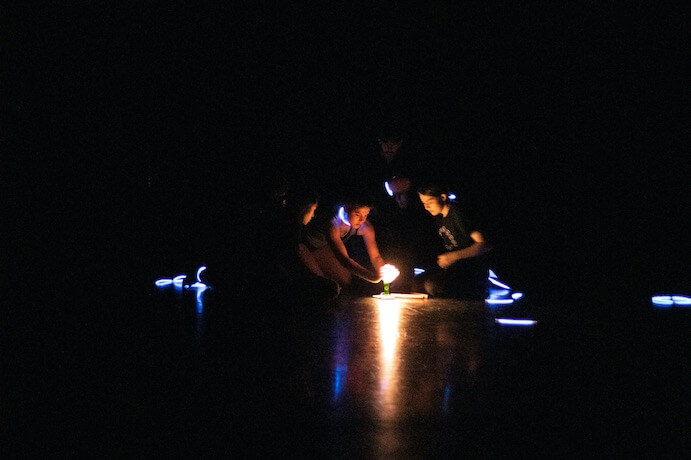
Come performance time, it’s important to continue the trend of safety and inclusion with our audiences! Make sure your promotional graphics and cover art use large size sans serif fonts, with text highly contrasted against the background for maximum legibility, and that your digital promotion includes closed captions, image descriptions, and alt text. Provide basic access info for the gig (such as “Step Free / Accessible Restroom”) on flyers and ticketing platforms in advance. Offer free tickets for personal assistants, and allow service dogs and emotional support animals inside. If you’re worried about “spoilers,” note any content warnings under a clickable link or large header with a note that spoilers are contained; safety is far more important than a little less surprise for people who require CWs. Keep the house lights low rather than completely black during changeovers to maintain the audience’s ability to see and to ease the mental and physical strain of drastic light shifts. Project captions/supertitles for music containing lyrics or include transcriptions in your concert program, even if the text is being performed in English for a predominantly English-speaking audience. And during the show, consider providing sensory bags with items like noise-reducing headphones, fidget toys, and pen and paper for those with sensory processing issues.
If you’ve never tried to incorporate accessibility into your practice before, these lists of tasks may feel massive and overwhelming. And there’s no shame in that! The shift to accessibility as default will take a long time. But intent is key here; when it comes down to it, making music accessible begins with being willing to try. Start small, and the people who can join you in your musical world will instantly expand. And isn’t that ADA-exciting?
I CARE IF YOU LISTEN is an editorially-independent program of the American Composers Forum, funded with generous donor and institutional support. Opinions expressed are solely those of the author and may not represent the views of ICIYL or ACF.
A gift to ACF helps support the work of ICIYL. For more on ACF, visit the “At ACF” section or composersforum.org.


